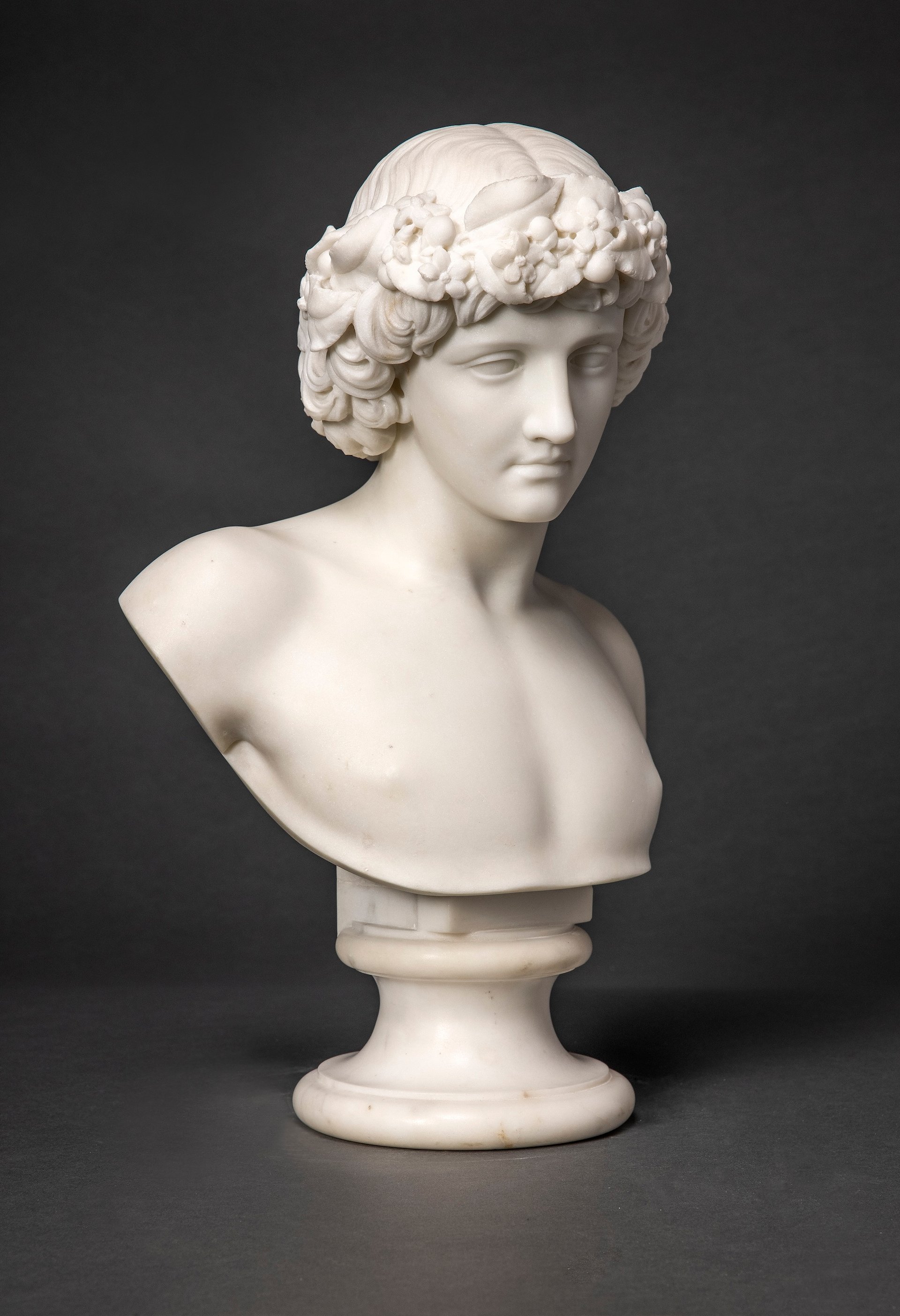The artist Emma Stebbins (1815-82) needs to be extra well-known than she is. In spite of everything, she created an iconic monument—the angel-topped Bethesda Fountain in New York’s Central Park. However with the opening of the brand new exhibition Carving Out Historical past on the Heckscher Museum of Artwork in Huntington, New York—and a 256-page e book detailing the artist’s life and work—her identify is about to develop into better-known.
The Heckscher curator Karli Wurzelbacher and her employees—along with outdoors students, artists and critics—have spent greater than 5 years planning a complete present establishing Stebbins among the many canon of greats in Nineteenth-century Neo-Classical sculpture. Displaying 14 marble sculptures collected from all over the world, Carving Out Historical past is the first-ever exhibition devoted solely to Stebbins’s oeuvre.
The Heckscher was not solely the primary museum to accumulate Stebbins’s work however, for a lot of many years, the one one to take action. Wurzelbacher, intrigued by this reality, wrote an article in 2021 that led to a descendant of the artist contacting the museum, saying there was plenty of artwork Stebbins made that the world had not but seen. An exhibition devoted to the prolific creator’s physique of labor, together with particulars of her life, started to take form. Wurzelbacher travelled to Oregon, Rome, Belfast and elsewhere to gather treasured items from Stebbins’s profession for the present.
Stebbins’s sculptures discover the matters of gender and sexuality, ecology and trade, public well being and therapeutic, clear water and the atmosphere. “Stebbins was this under-known, unsettled determine, however the work itself was so related to the up to date considerations of life,” Wurzelbacher says. “She undoubtedly defied norms, however she and [her wife, Charlotte] Cushman weren’t outsiders or outliers [where they lived in Rome]. They have been on the coronary heart of the expatriate [community], the last word insiders. The principles have been so totally different, they usually have been working inside them and stretching conventions, socially and inside Neo-Classical artwork.”
Emma Stebbins’s Charlotte Cushman (1870) Courtesy the Heckscher Museum of Artwork
Stebbins reworked working-class topics into miraculous marble sculptures—a medium traditionally reserved for gods, mythological figures and the elite. Her consideration to element is exemplified by her distinctive decisions, awakening in spectators a way of neighborhood and what we owe to one another.
“Artists nearly all the time depict the wings of angels,” the playwright Tony Kushner writes within the exhibition catalogue for Carving Out Historical past, “with the forefront of the wing and first feathers pointing vertically. The wings of Stebbins’s angel [on the Bethesda Fountain] are horizontal. They lead the attention not upwards however outwards, not heavenwards however degree with our earthbound environment. These wings will not be annunciatory or admonitory exclamation marks, telling us to drop to our knees earlier than a sovereign energy. The Bethesda angel’s horizontal wings gesture laterally in the direction of expanded imaginative and prescient; they’re a welcoming embrace.”
The Bethesda Fountain (1873) was meant to symbolise the “blessed present of pure and healthful water” after a cholera outbreak in 1832, which had led to the premature deaths of members of the Stebbins household. Along with evoking conversations about public well being, the fountain has usually been a website of neighborhood refuge in counterculture and youth actions. It has taken on particular which means for LGBTQ+ communities specifically—partially, by Kushner’s award-winning play Angels in America, which options the fountain prominently in its storytelling.
Carving Out Historical past takes care to explicitly identify and present the intricacies of Stebbins’s social community with different girls, artists and associates—together with the sculptors Harriet Hosmer and Anne Whitney—who turned her chosen household and made her profession attainable. Stebbins and Cushman, a Shakespearean actress, ceaselessly hosted salons and prioritised networking at their residence in Rome. The relationships Stebbins maintained there “formed her life and work, particularly throughout her energetic years as one of many first era of girls who went overseas to pursue sculpture professionally”, notes the exhibition catalogue.

Emma Stebbins’s The Lotus Eater (1863) Courtesy the Heckscher Museum of Artwork
Although Stebbins finally needed to cease working with a purpose to deal with her spouse, who suffered from breast most cancers, she completed a lot in her years as an artist. Her sculpture The Lotus Eater (1863) was the primary male nude made by a feminine American artist. Later, Stebbins turned the primary lady to earn a public sculpture fee from the Metropolis of New York for the Bethesda Fountain. A number of of her works would go on to dwell within the houses of outstanding queer {couples}.
Carving Out Historical past options just a few sculptures that haven’t been seen in additional than a century (and have been considered misplaced), alongside archival paperwork and pictures. The present additionally consists of works by up to date artists like Martha Edelheit, Patricia Cronin and Ricky Flores—whose 1983 {photograph} exhibits the Bethesda Fountain on the coronary heart of the annual Puerto Rican Day Parade.
Lots of Stebbins’s sculptures have been newly conserved and photographed for the primary time in preparation for the exhibition. With its archival supplies, Carving Out Historical past presents an unprecedented alternative to grasp Stebbins’s vary, motivations and influence.
“The which means of her work has been renewed and expanded throughout this complete 150 years,” Wurzelbacher says. “It’s outstanding to see it come to life on this means.”
Emma Stebbins: Carving Out Historical past, Heckscher Museum of Artwork, Huntington, New York, 28 September-15 March 2026








